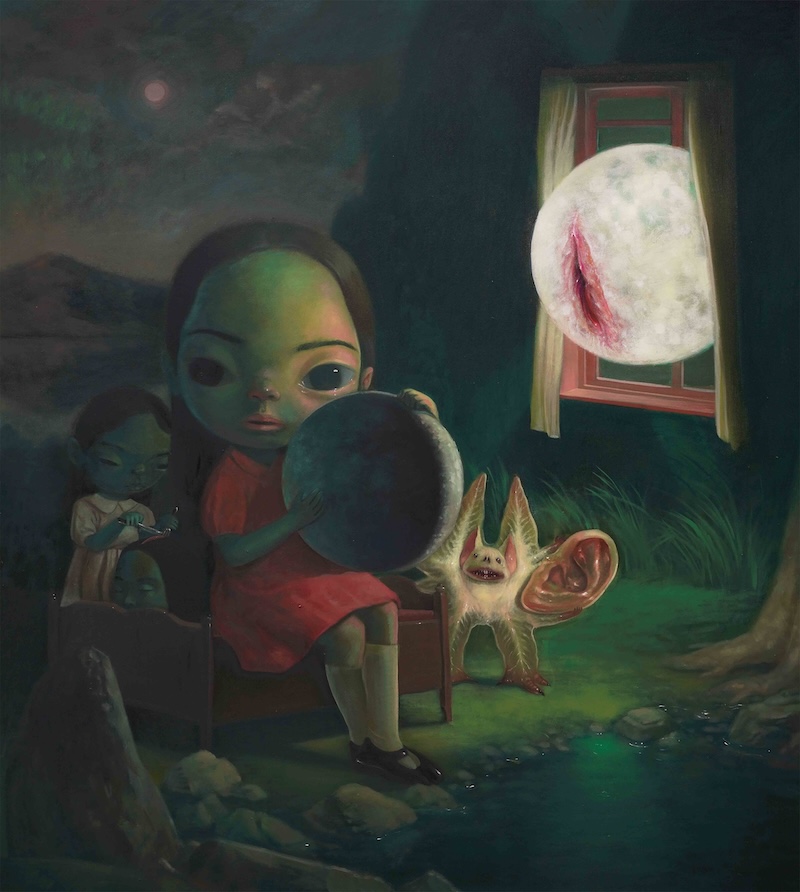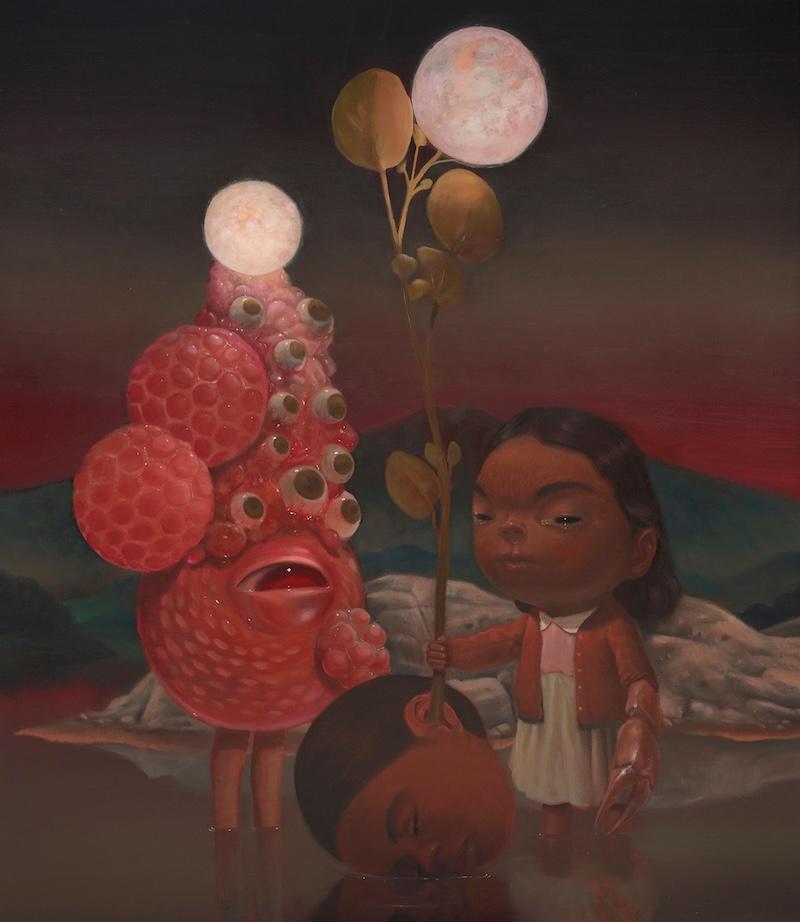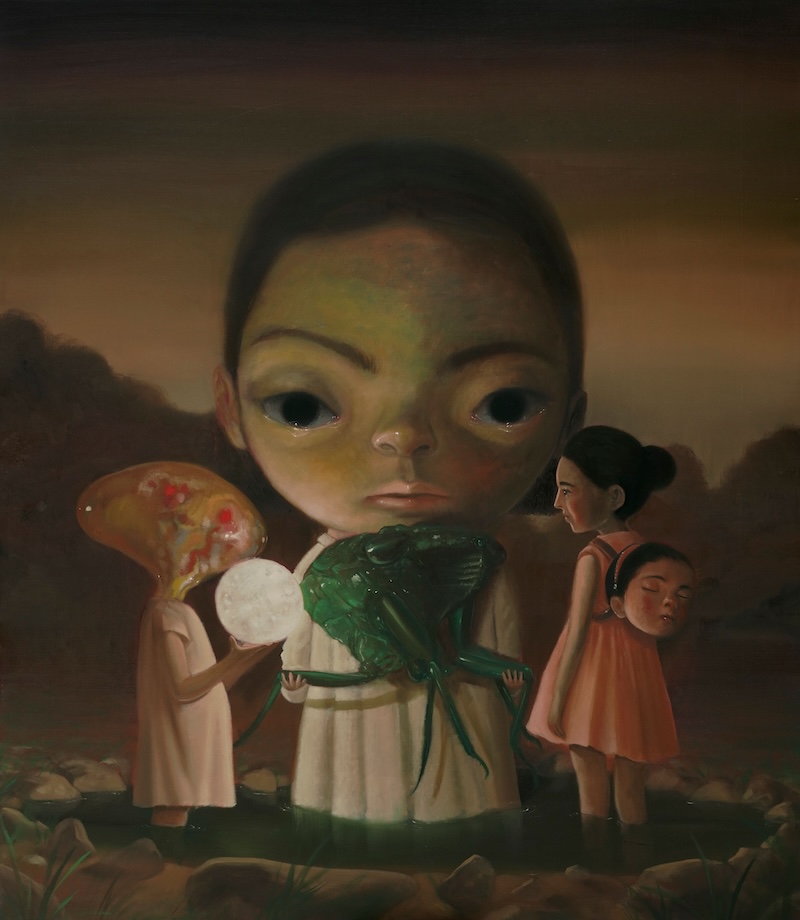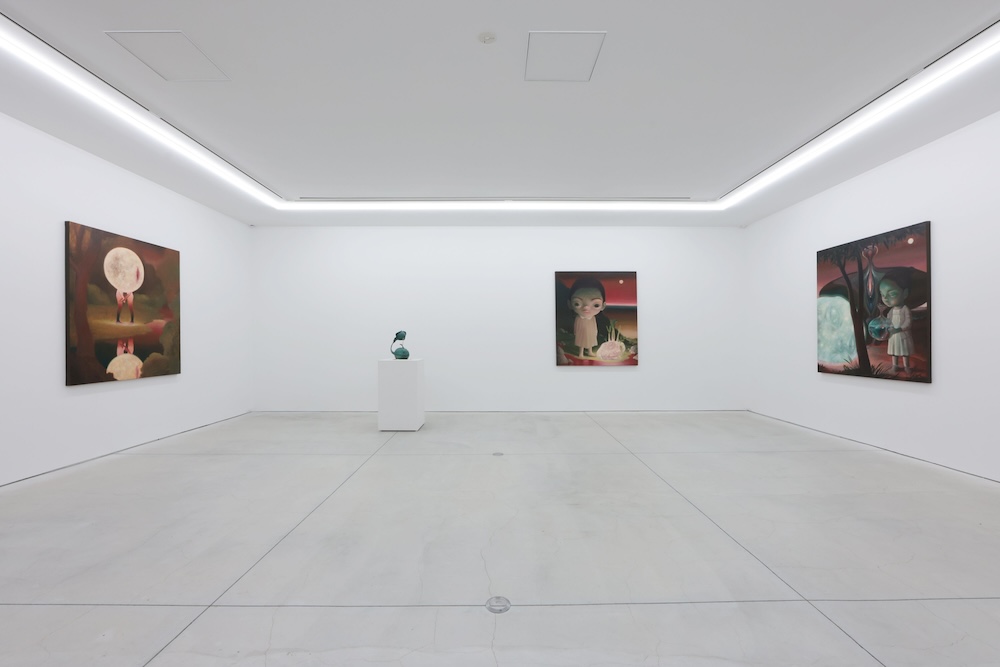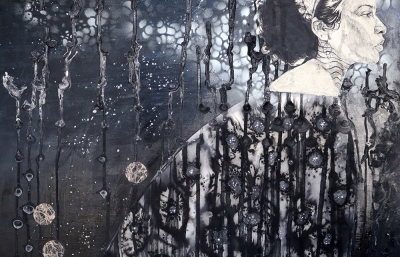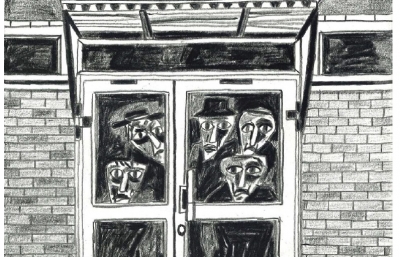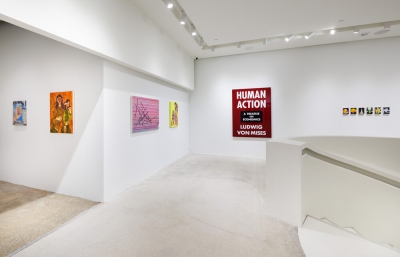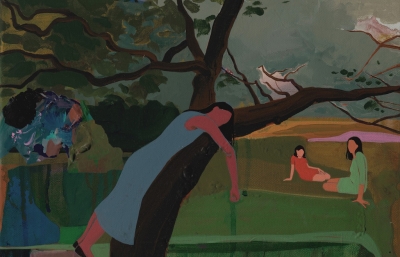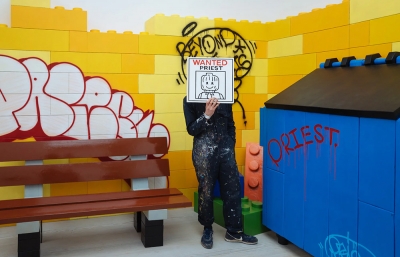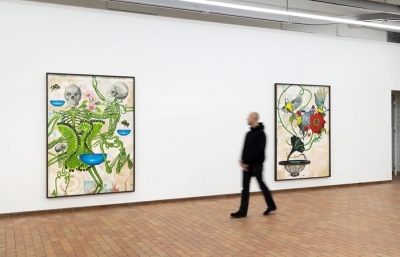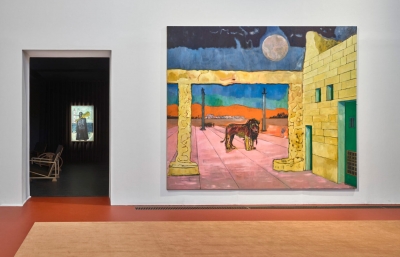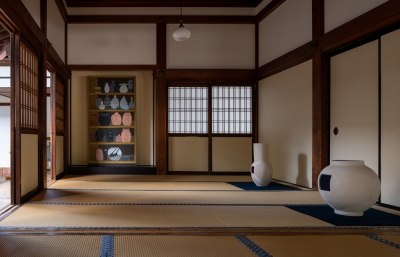"My works are like a mirror reflecting myself," Roby Dwi Antono says, "Often, they are also a space for self-criticism, as I attempt to repair my past or give hope for the future. I always feel the urge to gather all the scattered fragments of my memories and transform them into paintings.”
With this in mind, NANZUKA is pleased to present a solo exhibition of new works by Yogyakarta-based Indonesian artist Roby Dwi Antono at NANZUKA UNDERGROUND. This marks the artist’s second solo presentation with the gallery.
Roby’s unique visual language draws inspiration from science fiction and natural history, facilitating connections between futurism, fantasy, and surrealism. His work, in which humans, imaginary creatures, and various pop culture symbols coalesce could indeed be regarded as a contemporary rendition of surrealism and are conceived through a combination of his own memories, experiences, and imagination. For this exhibition, Roby has returned to working with oil paint, making a decided shift from the oil chalk and oil pastel canvas works he exhibited three years ago, to produce a series of profound and mystical paintings depicted with painstaking attention to detail. Roby mentions the theme of this series as being a “life cycle.” Having become a father this year with the birth of his first child, Roby reflects on his past to ensure that his actions will bring about a positive cycle for his child in the future.
As implied by title of the exhibition “LUNAR RITUALS,” the moon appears as a symbol in all of the works presented. Roby sees the moon as a symbol of mystery. The moon itself is dark and is unable to generate its own light. However, For Roby, the way the moon shines at night, reflecting the light of the sun, became a symbol of spiritual goodness, intelligence, and introspection. This belief that the moon represents rebirth is consistent with the rich symbolism of Javanese culture in Indonesia, where the moon holds both spiritual and cultural significance. The Javanese lunisolar calendar, for example, is based on the phases of the moon and governs many aspects of life, from religious rituals to agriculture. Its cyclical nature reflects the cycle of life, death and rebirth, and is believed to be closely tied to ideas of reincarnation and cosmic balance. In Javanese culture, the moon is also a symbol of reflection and meditation, and bears a strong connection to feminine power. It is associated with fertility, nurturing, and the cycle of creation and rebirth, and is linked to the goddess Dewi Ratih, who symbolizes beauty, love, and devotion. This feminine energy reflects the nurturing role of women in Javanese society, while the moon represents protection, compassion, and the creative forces of nature. Roby attempts to convey the importance of a mother’s influence on her child’s development by employing the moon as a symbolic metaphor.
The motif of water, which appears together with the moon, is also important to Roby. Roby had difficulty obtaining drinking water during his childhood, recalling memories of the time he spent with his family trying to obtain it. The process of excavation, drainage, filtration, and sedimentation required to create a belik – source of clean water had thus taken on a deeper meaning for Roby. He himself mentions that it is a fragment of a childhood memory that has left a lasting mark on him, and is one that is profoundly sentimental. It reflects the pure ideals that underlie the artist’s desire to deeply inside himself, to shed is bad habits and negative traits, and to become a more favorable person.






